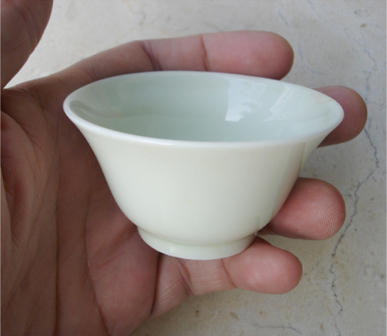The taste of water
Subtle, significant distinctions
Two teacups, separated by about a thousand years. Taxonomically they could be assigned to a common family of shape, scale and approximate colour. But, the differences are perhaps greater.
On the left, the older (Song, 960-1279) cup is subtly dynamic, with a loose shape and lip, the result of being formed by hand. Inside, a whirl provides evidence that it was thrown on a wheel, even as the outside has been subsequently pressed with a simple mould that has straightened the profile (and raised a seam on one side.) The colour of the glaze is a particular grey that is easily influenced by its environment - placed on a warm red background, it tends to be seen as cool and green; in a cool setting, it is experienced as warm and soft. This is the hallmark of the neutral position.
By contrast, the right-hand cup is new, a product of mass-produced casting. It has a more mechanical shape, with a firm and unyielding symmetry. The glaze is similarly tight and bright, an exact colour position that resists change. This is an object that should properly be placed in a series of modern products, made with concern for measurable factors. It has limited relation to literati traditions.
Private Collection |

